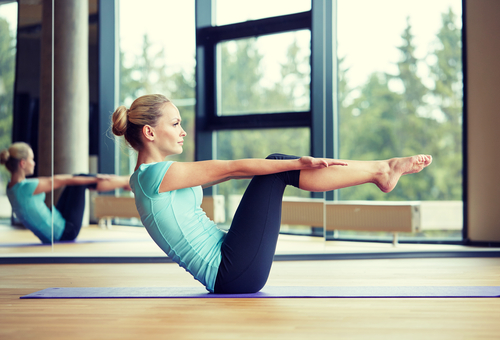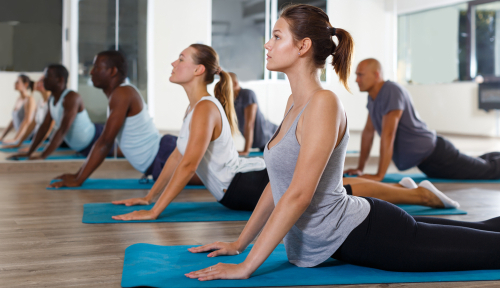Health Benefits of Pilates
In the 1920s, Joseph Pilates the designed an exercise method to strengthen the mind and body. Pilates realized that by using springs for resistance and/or assistance, he was able to help those who were bedridden complete an efficient exercise routine, which later became known as the modern-day Pilates method. Pilates consists of using mental focus in order to improve movement efficiency and muscle control, awareness of neutral spine alignment and proper posture, development of deep muscles of the back and abdomen to support the spine, and relaxation through breathing.
Pilates equipment uses the resistance of springs producing a controlled functional movement, strengthening the deep postural muscles and promoting a healthy spine with supported flexible movements of the hips, shoulders and the spine, preventing unnecessary torque at the spine.

Below are some of the numerous health advantages of Pilates:
Increased core, flexibility, and strength
While Pilates is considered to be a ‘low-impact workout’, it can help dramatically with building your core muscles, a boost in flexibility, and increased strength.
Pilates, along with physical therapy, can help improve back pain
Pilates can help you with your back pain. According to a study by the Journal of Orthopedic & Sports Physical Therapy, individuals who followed a four-week Pilates routine experienced more relief for back pain than those who solely relied on the help of specialists and physical therapy alone. It is believed that Pilates helps to strengthen and stabilize the lower back, thus alleviating pain and stress.
Pilates can improve brainpower
According to Fitness Magazine, “Joseph Pilates called his workout method “the thinking man’s exercise.” It could very well be. When Chinese researchers measured changes in women’s brain activity after 10 weeks of Pilates training, they found an increase in the brain’s alpha peak power, which is related to neural network activity, memory performance, and other cognitive functions. Researchers believe Pilates may even hold potential as a treatment option for people with brain-degenerative diseases and cognitive dysfunctions.”

Pilates aids in improving sports performance
Because Pilates is aimed to provide a workout that focuses on balance and proper form, each muscle group is equally worked and strengthened. This helps athletes especially to ensure better performance with a reduced chance of injury.
Pilates is a low-impact exercise
A low-impact exercise is essentially an exercise routine in which one’s feet remain on the ground for the duration of the workout. Pilates exercises predominantly involve positions in which one remains seated or reclined, thus making Pilates one of the most prominent and effective low-impact workouts.
While Pilates remains a relatively safe and easy-to-do workout, it is recommended that you consult with your primary-care physician before you begin any new workout routine.
Contact Us
If you are looking to learn more about Theramotion’s Pilates services, please contact us at 718-279-9800. Additionally, you can fill out contact information on our Contact Us page and we will get back to you.
References
